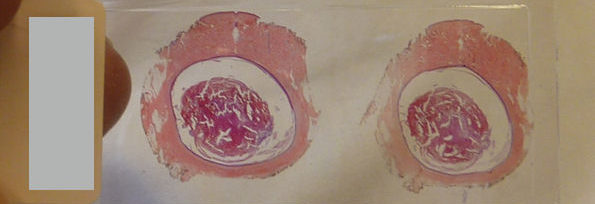https://reader.elsevier.com/reader/sd/pii/S2214442020302527?token=D74BA92BF13B4096B7BF6AFE15F477A6FC7BF55BCC95CB7FAA465BEF1C0D69B12837C43AB2B4E0BA27FF16E52A5FF9A6&originRegion=eu-west-1&originCreation=20220120155429
Urinary tract foreign body: A case of panurethral and intravesical spray
foam insulation
Rosa Park a, Susan M. MacDonald b,*
a Division of Urology, Northport VA Medical Center, Northport, NY, USA
b Division of Urology, Penn State Health Milton S. Hershey Medical Center, 500 University Drive, P.O. Box 850, Hershey, PA, USA
A R T I C L E I N F O
Keywords:
Urethra
Foreign body
Urethral stricture
Polyembolokoilamania
Urethrotomy
A B S T R A C T
Foreign bodies are inserted into the genitourinary tract for various reasons, and may present a challenge to
remove. We report a case of foam insulation injected into the urethra almost entirely occluding the urethra and
filling the bladder. Ultimately both a cystotomy and perineal urethrotomy were required for removal.
Introduction
Multiple cases of foreign objects inserted into the urethra have been
described. Nonetheless, It is a relatively rare occurrence.1–3 These
foreign objects are typically inserted due to psychiatric illness, intoxi-
cation, or autoeroticism.2 Polyembolokoilamania is the insertion of
foreign objects into body orifices for sexual gratification.4 Removal of
the foreign object may present a challenge depending on the size, shape
and location. These objects can cause pain, hematuria, and trauma to the
urethra ultimately leading to urethral stricture disease. We present the
case of a male patient who inserted a long straw into his urethra for
sexual gratification and inadvertently injected spray foam insulation
into the full length of his urethra filling his bladder.
Case report
A 45-year-old male patient presented to the emergency department
with hematuria and difficulty with urination. He had been inserting
various objects into his urethra as an aid for erectile dysfunction. His
partner had inserted a straw attached to a can of weatherproofing spray
foam into his urethra three weeks prior and inadvertently pressed the
button deploying the foam. Since then, he had progressively worsening
difficulty with urination, dysuria, and gross hematuria with urinary
retention. Computed tomography (CT) of the abdomen and pelvis
showed radiolucent foreign material in the nondependent bladder
measuring 10.7 × 4.3 × 6 cm. There was additional radiolucent foreign
material noted in the penis measuring up to 16mm in width (Fig. 1).
After obtaining informed consent, the patient was taken to the
operating room for removal of the foreign body. He underwent open
cystotomy with removal of foreign body, cystourethroscopy, urethral
dilation, perineal urethrotomy and closure of perineal urethrotomy. The
spray foam was removed from the bladder and prostatic urethra first
through a cystotomy. An attempt was made to remove the spray foam in
the urethra endoscopically in an antegrade fashion from the cystotomy
using a basket, however the patient had urethral stricture disease and
the narrow portions of his urethra anchored the spray foam in place.
Ultimately a perineal urethrostomy was required to remove the
remaining fragments (Fig. 2). Intraoperative findings showed multiple
anterior urethral strictures, however, an approximately 10 French
midshaft urethral stricture limited the passage of the cystoscope. A 20-
french suprapubic tube, 14-french urethral catheter, and pelvic drain
were ultimately placed. The postoperative course was unremarkable
with a retrograde urethrogram at three weeks showing no contrast
extravasation from the urethra. The drain and urethral catheter were
removed and the patient has been managed subsequently with a
suprapubic tube in anticipation of a urethral repair.
Discussion
Various objects inserted into the urethra have been reported. These
can vary from common household items such straws, cotton tipped
swabs, or batteries to more industrial items such as nails and cable
* Corresponding author. Division of Urology, Penn State Health Milton S. Hershey Medical Center, 500 University Drive, P.O. Box 850, Hershey, PA,17033-0850,
USA.
E-mail address: smacdonald@pennstatehealth.psu.edu (S.M. MacDonald).
Contents lists available at ScienceDirect
Urology Case Reports
journal homepage: http://www.elsevier.com/locate/eucr
https://doi.org/10.1016/j.eucr.2020.101363
Received 25 June 2020; Received in revised form 22 July 2020; Accepted 26 July 2020








 Views Today : 670
Views Today : 670